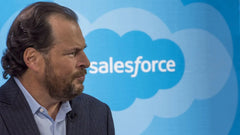Historic Grimsby Jewellers Shutter After 154 Years, Mirroring High Street Decline
Table of Contents
- Key Highlights
- Introduction
- A Glorious Legacy
- Economic Factors at Play
- G. Hewitt & Son's Deserved Farewell
- The Future of Retail in Grimsby and Beyond
- FAQ
Key Highlights
- G. Hewitt & Son, a historic jewellers in Grimsby, has announced its permanent closure after 154 years of operation, underscoring troubling retail trends.
- The closure coincides with a significant rise in shop vacancies across the UK, driven by the challenges posed by online shopping, rising operational costs, and changing consumer behaviors.
- The iconic store will host a final farewell sale, offering discounts before shutting its doors for the last time on April 26, 2025.
Introduction
As the shutters descend on G. Hewitt & Son, a cherished cornerstone of Grimsby’s high street, customers and employees alike reflect on over a century of sparkling history. Set to close after 154 years of trading, the family-run jewellers exemplifies both retail endurance and vulnerability, caught in the throes of a widespread crisis affecting the British high street. In a landscape transformed by online shopping and escalating costs, G. Hewitt’s farewell not only brings wistfulness but also prompts a critical examination of what the future may hold for high street retailers throughout the UK.
A Glorious Legacy
Founded in 1871 by George Hewitt, a local farmer turned clockmaker, G. Hewitt & Son has served generations of the Grimsby community. The jewellers became one of the UK’s first authorized Rolex retailers, a badge of honor that has tethered its legacy to quality and opulence. As Jonathan Hewitt, great-grandson of the founder, shared, the storied history includes highlights such as achieving one of the country’s largest Rolex showrooms in 2011. The indelible mark left by generations reflects the evolution of the town itself, capturing a glittering tapestry of local culture and commerce over the decades.
Jonathan, who took over at 16, later welcomed his daughter Christina into the fold, reinforcing their commitment to family and craftsmanship. "We were one of the first Rolex retailers in the UK," he stated. “It’s been an absolute privilege to be part of Grimsby’s High Street history.” Still in possession of vintage Rolexes dating back to 1919, the family's legacy extends not only through sales but as part of the very fabric of the community.
The Shift in Consumer Behavior
While the local history embedded within the walls of G. Hewitt & Son paints a nostalgic picture, it is impossible to ignore the shifting tides affecting retail everywhere. The rise of online shopping, exacerbated by the effects of the pandemic, has transformed consumer expectations and behaviors. The convenience of e-commerce has become preferable for many shoppers, leading to declining foot traffic in traditional retail environments.
The British Retail Consortium has documented a broader trend, noting that over 17,350 retail sites are predicted to close this year alone. More troubling is the £2.3 billion cost to the retail sector from the upcoming rise in National Insurance Contributions (NICs). As businesses struggle with these mounting operational pressures, closures and consolidations have become more frequent.
Economic Factors at Play
The retail landscape is further complicated by rising costs borne by shops. The British public’s preoccupation with value and price has become more pronounced amidst global economic fluctuations. Increased operating expenses, particularly labor costs due to rising minimum wages and National Insurance hikes, have been cited as critical factors that strain profit margins for many retailers.
To compound the anecdote of G. Hewitt & Son, large chains like Debenhams and Wilko have also shuttered stores, unable to weather the storm of reduced margins and increased competition from online platforms. Stores that once thrived have turned into relics of a different era, overshadowed by an economic environment that no longer favors traditional retail models.
The Ripple Effect of Store Closures
As local landmarks close, the impact is felt on more than just the specific business. An exodus of stores leads to diminished footfall, decreasing customer interest in the area, and potentially compromising the viability of surrounding shops. A single prominent closure like G. Hewitt & Son dilutes the reason for consumers to visit the high street, resulting in vacancies that further exacerbate the problem.
The phenomenon creates a vicious cycle: less foot traffic leads to more closures, which in turn drives down community engagement in town centers. Many retailers, including Wilko and The Body Shop, find themselves caught between the demands of landlord agreements and the need for operational profitability.
G. Hewitt & Son's Deserved Farewell
As G. Hewitt & Son prepares for its closing date on April 26, the team has announced a final sale featuring considerable discounts across their jewelry and watch collections. Such events are both a poignant farewell and a way to celebrate a legacy that has flourished for generations. As Jonathan said, “We wanted our loyal customers to have one last opportunity to acquire pieces from us—for many, they are more than just items; they are memories.”
The sale represents a dual burden of loss and nostalgia. It is a chance for customers to own a piece of history while bidding adieu to a retail presence that has long been synonymous with family, craftsmanship, and personal service.
The Future of Retail in Grimsby and Beyond
G. Hewitt’s story is reflective of broader trends impacting retail across the UK. The increasing reliance on e-commerce and its convenience, combined with stubborn economic factors, suggests a challenging path forward for traditional retailers. Some businesses are shifting focus to retail parks with better parking access as they engage with changing consumer behaviors, adding another layer of complexity to the future of high streets.
Such a transformation in retail setup may also indicate an inevitable evolution, where fewer in-store experiences are available but potentially offset by more curated shopping experiences online. The key to resilience may lie in innovation: adapting to customer preferences while finding ways to leverage the community focus that has historically defined special shops like G. Hewitt & Son.
While the goodbye will be difficult for loyal customers, the potential for a revitalized high street—aligned with contemporary desires for convenience and experience—remains. Engaging the community, embracing digital developments, and championing unique customer experiences could ultimately write the next chapter in the history of Grimsby's retail landscape.
FAQ
Why is G. Hewitt & Son closing?
G. Hewitt & Son is closing due to a combination of declining foot traffic, rising operational costs, and changing consumer preferences toward online shopping.
What will happen to the employees of G. Hewitt & Son?
While no specific information about new jobs for employees has been released, many small businesses struggle with employee transition during closures. Often, long-standing staff may seek new employment in other retail venues.
Are other retailers facing similar challenges?
Yes, many traditional retailers face significant challenges, with major brands like Debenhams and Wilko having recently closed stores due to reduced sales and increased financial pressures.
What are the main factors driving high street store closures?
Key factors include rising operational costs, increased competition from online shopping, consumer behavior shifts, and the economic impact from rising National Insurance contributions.
What can be done to revitalize high street shopping?
Revitalization may involve a mixture of enhancing local experiences, offering unique in-store events, supporting small businesses, and adapting to e-commerce trends while ensuring community engagement.
POWER your ecommerce with our weekly insights and updates!
Stay aligned on what's happening in the commerce world
Email Address
Handpicked for You
26 June 2025 / Blog
L’Oréal’s Marketing Mastery: How a Global Beauty Giant Captivates Consumers Everywhere
Read more

